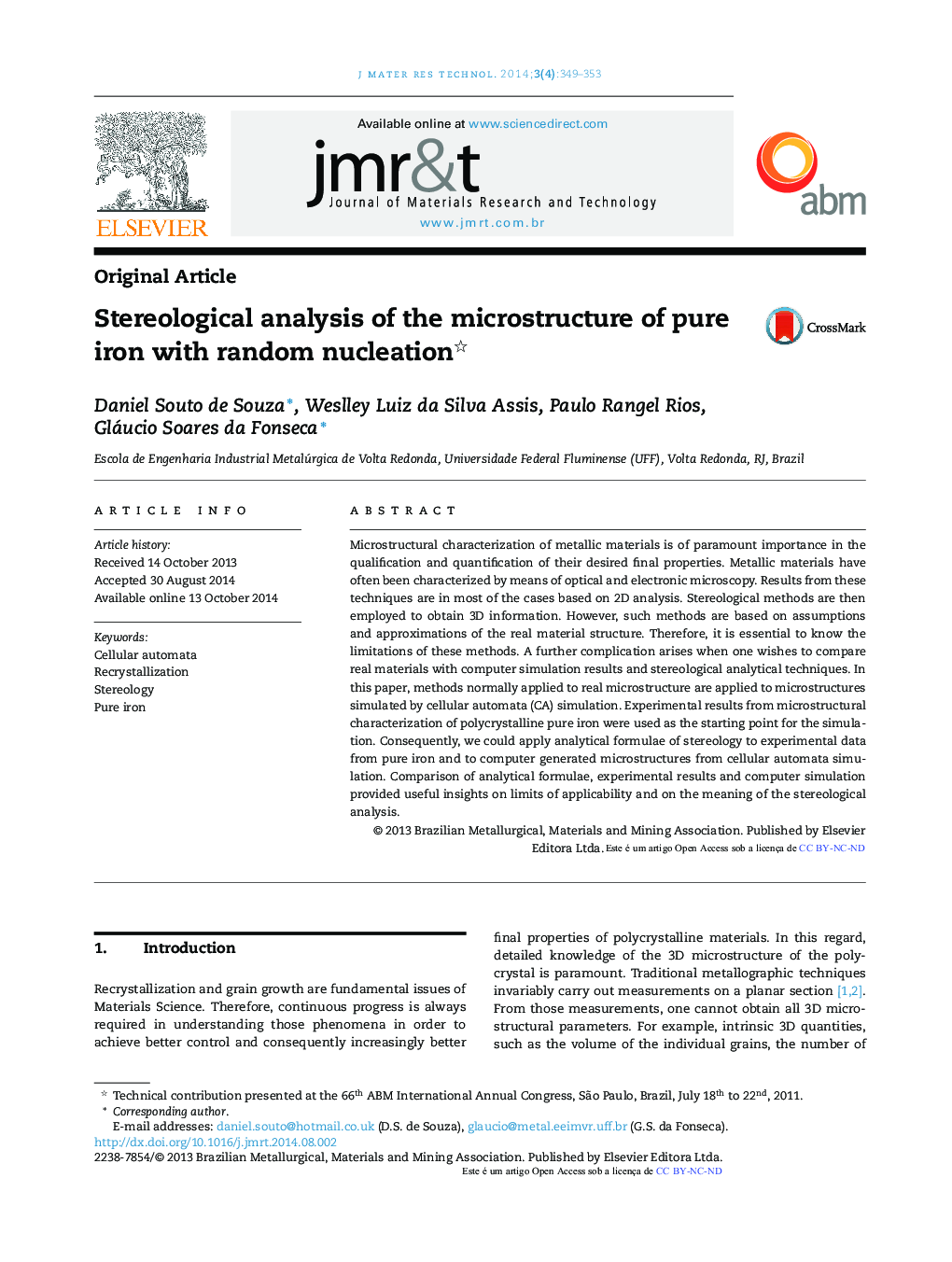| Article ID | Journal | Published Year | Pages | File Type |
|---|---|---|---|---|
| 1479926 | Journal of Materials Research and Technology | 2014 | 5 Pages |
Microstructural characterization of metallic materials is of paramount importance in the qualification and quantification of their desired final properties. Metallic materials have often been characterized by means of optical and electronic microscopy. Results from these techniques are in most of the cases based on 2D analysis. Stereological methods are then employed to obtain 3D information. However, such methods are based on assumptions and approximations of the real material structure. Therefore, it is essential to know the limitations of these methods. A further complication arises when one wishes to compare real materials with computer simulation results and stereological analytical techniques. In this paper, methods normally applied to real microstructure are applied to microstructures simulated by cellular automata (CA) simulation. Experimental results from microstructural characterization of polycrystalline pure iron were used as the starting point for the simulation. Consequently, we could apply analytical formulae of stereology to experimental data from pure iron and to computer generated microstructures from cellular automata simulation. Comparison of analytical formulae, experimental results and computer simulation provided useful insights on limits of applicability and on the meaning of the stereological analysis.
